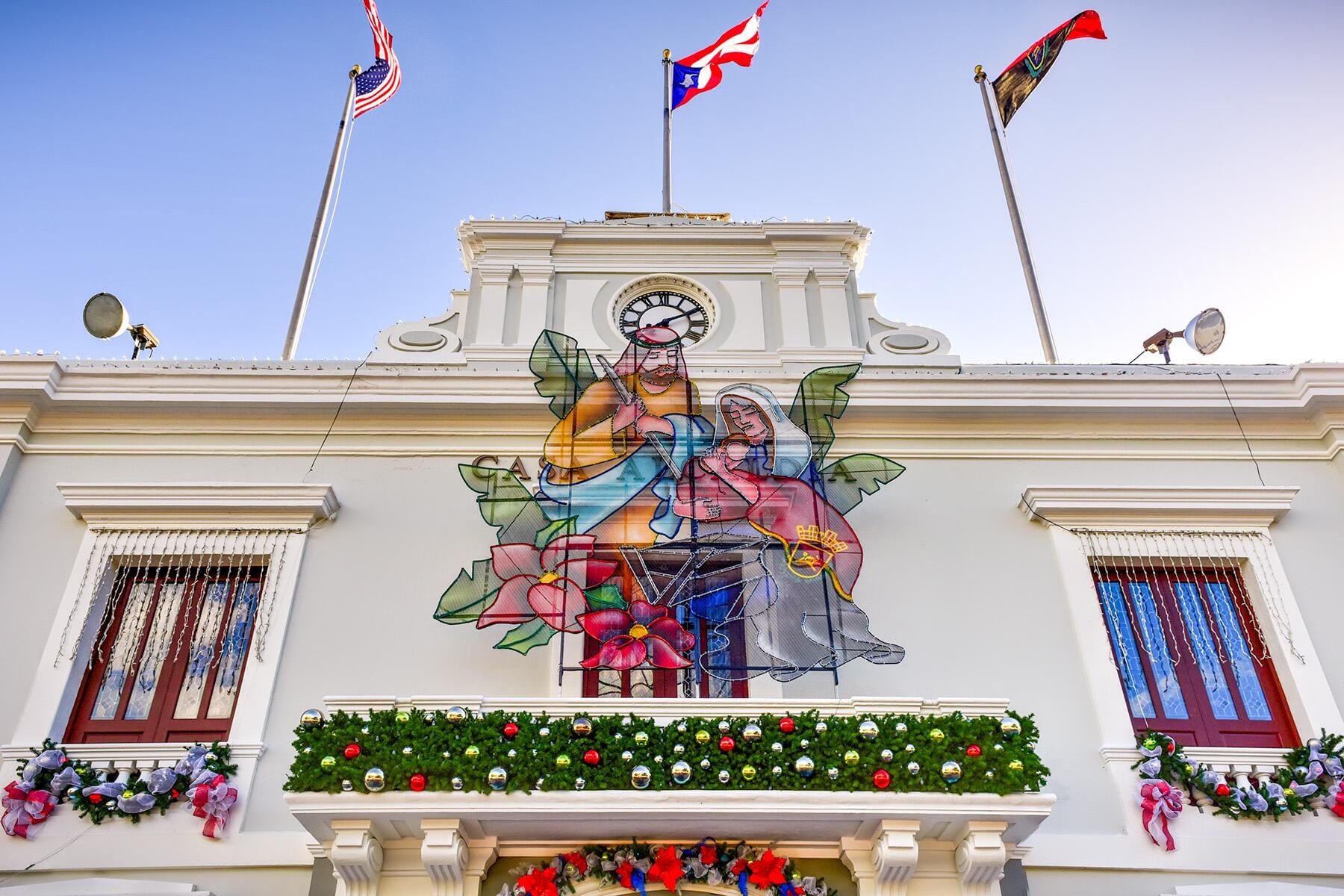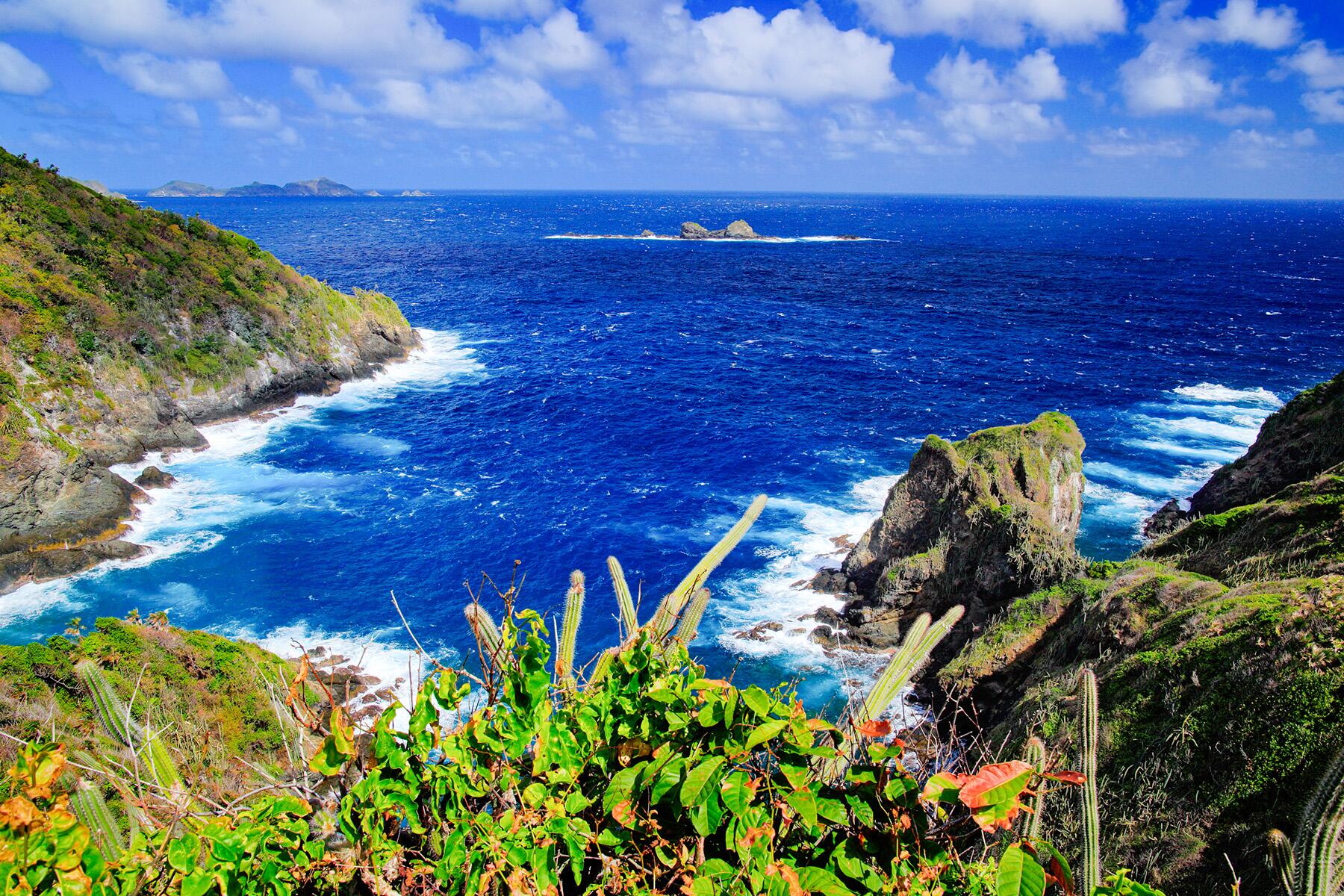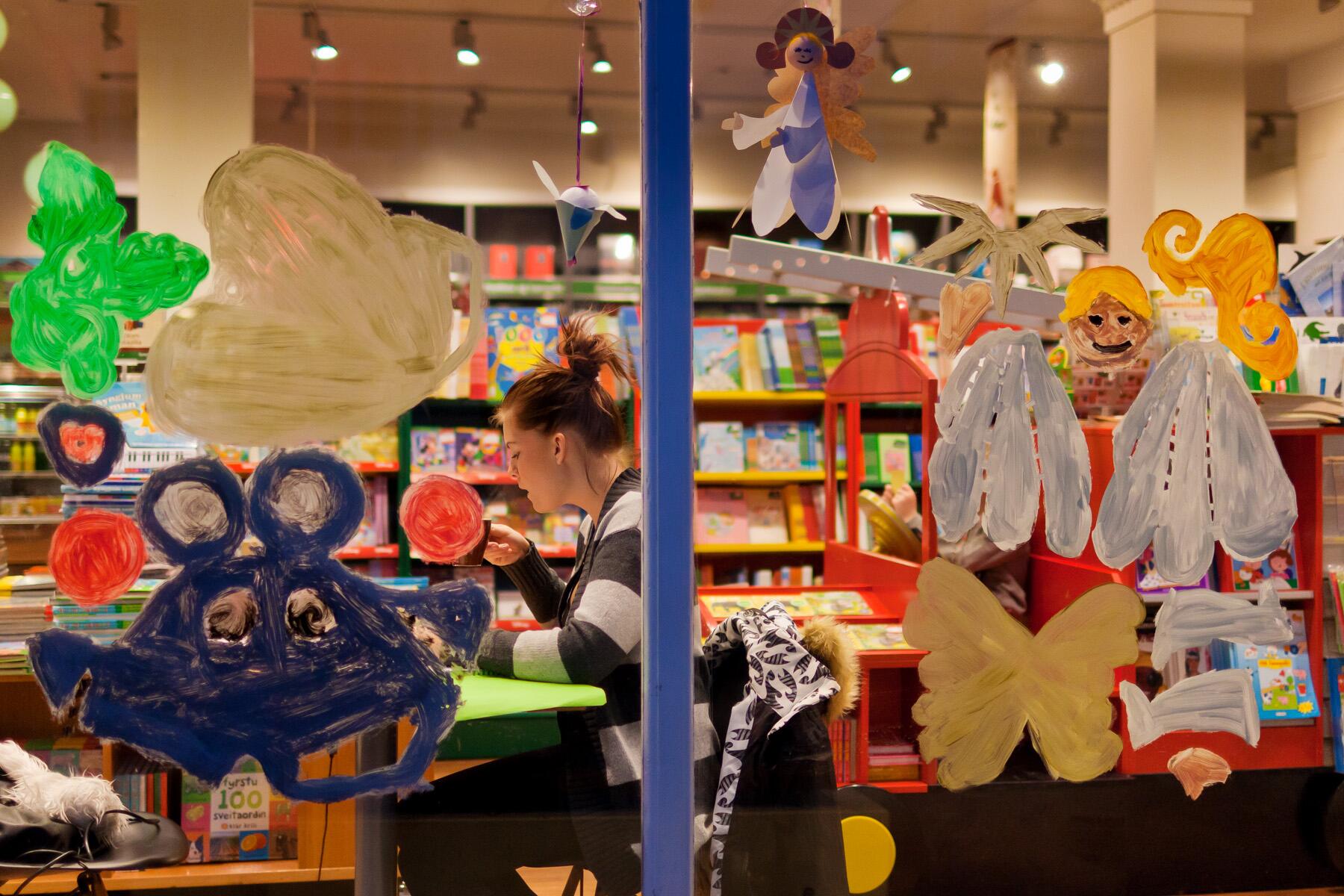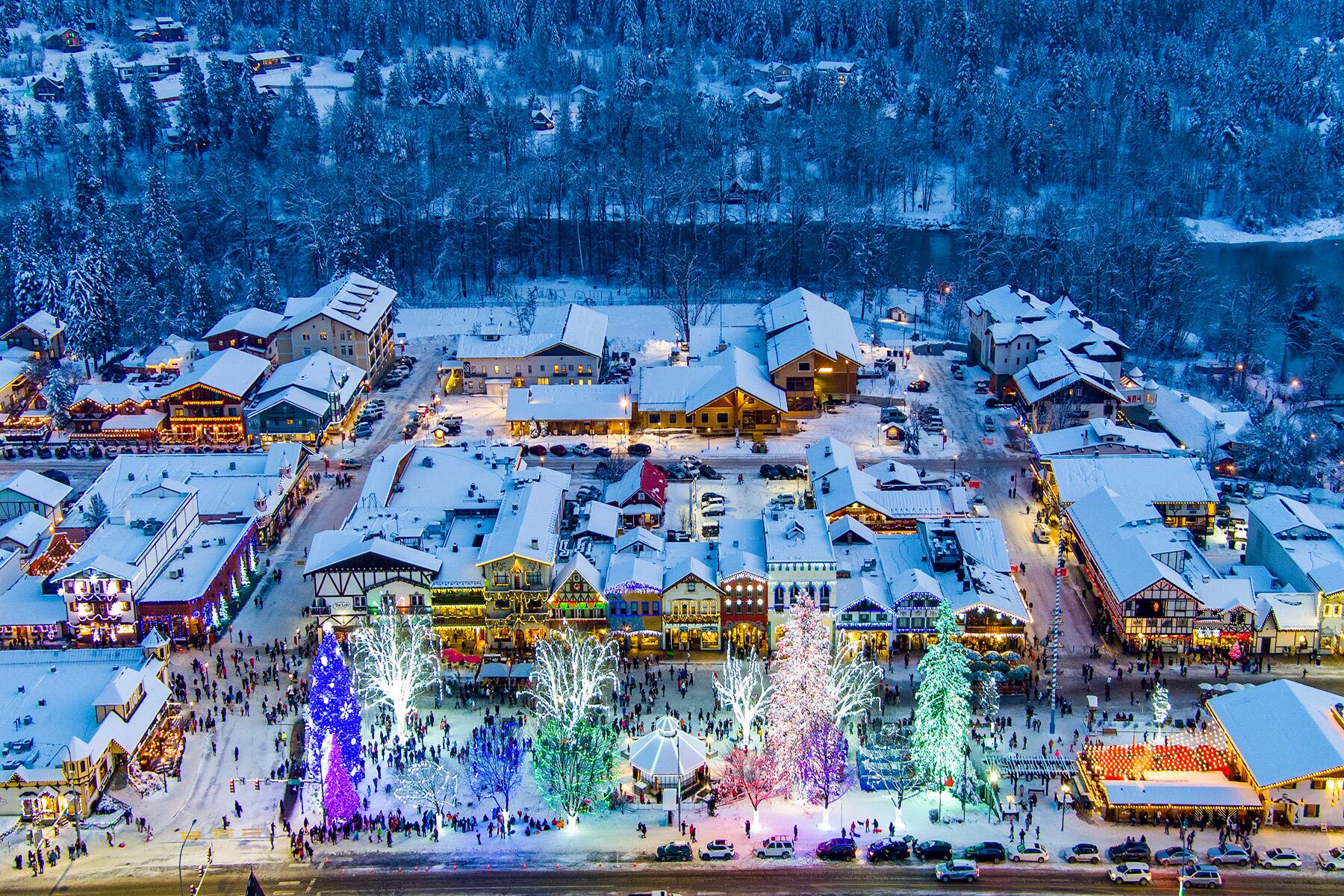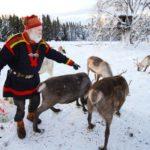- ⁄
- Travel News
- ⁄
- Events •
- Family
These curious customs help Scandinavians get through the months-long winter darkness.
Among all the holidays and celebrations throughout the year, Christmas is the favorite of the Nordic region, a vast swath of land that covers Sweden, Denmark, Norway, Iceland, and Finland. After a long, gloomy fall and less than five hours of daylight at the peak of winter, Christmas marks the turning point when light begins to prevail over darkness. It’s only natural that this holiday brings a special joy to the region’s residents. But some of the Nordic Christmas traditions may come as a surprise.
It’s Actually a Pagan Holiday Called Yule
Nordic Christmas roots go into the pagan holiday of Yule, a days-long feast that was perhaps the most important celebration of the year, the winter solstice. Yule was important for several reasons: it gave farmers something to do at the time when field works were over; it lifted spirits during the toughest time of the year, when sickness and cold temperatures often claimed easy victims; and it defied the forces of evil that lurked in the dark, giving hope to people in surviving the long Scandinavian winter still ahead.
Held around the same dates in late December, Yule went through a process of Christianization around the 9th century AD when, with the efforts of missionaries, it started shaping into the holiday we know today. Christmas in the Nordics is still referred to by its pagan name: Jul in Sweden, Norway, and Denmark, Jól in Iceland, and Joulu in Finland.
Christmas Starts Early
In most Nordic countries, the weeks-long Christmas celebration kicks off on December 13th. This tradition of starting early, particularly strong in Sweden, is also observed in Norway, Finland, and Denmark. Called Saint Lucia Day in honor of a 4th-century martyr from Syracuse, the day begins with young girls wearing a wreath of long white candles on their heads (nowadays, the candles are safely made with plastic) and treating the rest of the family to special saffron-flavored lussekater buns.
In Iceland, the festivities start even earlier—on the first Advent Sunday. That’s when the decades-old annual lighting of the Oslo Christmas tree, gifted to the city of Reykjavík by its Norwegian neighbor, occurs at Austurvöllur Square. The long-awaited event gathers thousands, but it is particularly anticipated by families with small children.
Recommended Fodor’s Video
The Holiday Lasts for 13 Days
It is not uncommon in the Nordics to get two weeks—from December 24 to January 6—off from work for Christmas. Across the region, festivities last all the way to January 6, the day of the Epiphany, also called the Day of The Three Kings. The day is celebrated across the Christian world as the time when the three Magi came bearing gifts to visit baby Jesus, but in the Nordics, it marks the end of Christmas celebrations. In many homes, the Christmas tree is kept until then to keep the spirit going.
Gifts Come Early
In just about every Nordic culture, a mythical creature starts visiting homes twelve days before Christmas. At bedtime, children leave slippers on a window sill in anticipation of gifts from the nightly visitor. In the morning, the slippers of those deemed well-behaved will be laden with small toys, candy, or cookies.
Called Nisse in Norway and Denmark and Tomte in Sweden, the good-humored gnome with a long white beard and a pointed red knitted cap is mostly benevolent but can cause mischief if an opportunity presents itself. Still, it is a Christmas favorite (visit Tomtar & Troll in Gamla Stan, Stockholm to get immersed in the world of tomte, handmade in all shapes and forms by local artists Maija Tahko and Kicki Flodén).
Icelandic children get visits by the 13 Yule Lads. Each of the lads has a peculiar trait: Skyrgámur (Skyr-Gobbler) likes to feast on Icelandic skyr (yogurt) while Bjúgnakrækir (Sausage-Swiper) is known for stealing holiday sausages.
Not All Nordic Christmas Helpers Are Nice
Children in Iceland are wary of Grýla, a two-horned mountain ogress with hooves instead of feet, an enormous nose, and a face covered in warts. She comes down from her mountain abode at Christmas, sneaking around towns and villages while looking for extra naughty children to cook in her cast-iron kettle. Grýla also happens to be the mom of the 13 Yule Lads, who report on the unlucky candidates ahead of time. Interested in meeting the lovely Grýla in person? Check out her statue in the Troll Garden by Fossatún, a 16 room hotel and guesthouse near the namesake waterfall about 80 kilometers north of Reykjavík.
The Christmas Goat Is the Ultimate Prankster
The Nordic Christmas Goat has lived through several transformations, but its origins purportedly trace back to Thor, the Norse god of thunder, and his two chariot-pulling goats. Over time, the goats of Thor have morphed into a devilish character wreaking havoc on villages across Scandinavia and punishing people whose homes weren’t clean and orderly in time for the holidays. Later still, the Christmas Goat lightened up, became a jolly prankster, and even started bringing Christmas gifts centuries before the emergence of Santa Claus. So strong is the tradition that in Finland, Santa is still called by his pagan name Joulupukki (Yule goat).
But the Swedish town of Gävle takes home the “goat honors.” Every year since 1966, a large Yulbocken statue has been erected in the town’s main square for the purpose of subsequent incineration. The wretched goat has become a world-famous attraction, warranting the creation of its own Twitter handle and a live webcam broadcast.
It’s a Full-on Smörgåsbord
Between late November and January, various Christmas-themed parties are held at work, school, community organizations, or simply among friends. Called julebord (literally, a Christmas table) in Norway, julbord in Sweden, julefrokost in Denmark and Pikkujoulu (little Christmas) in Finland, these parties across the region have the same central idea: a group of people gathers around a traditional Christmas buffet and enjoys the abundance of food and alcohol in order to pass the bitter-cold, dark days with cheer.
Many restaurants and venues offer their own julbord menus (visit Stockholm’s Grand Hotel for its renowned julbord extravaganza and homemade fennel snaps and Aquavit). In addition to staples like the julskinka Christmas ham, some buffets include dishes from Mediterranean and Asian cuisines to appeal to contemporary palates. Although highly modernized now, the tradition goes back to the Dark Ages, when it was customary to leave food outside for the poor to take part in the holiday feast.
Christmas Ornaments Are Made out of Straw
Christmas trees in the Nordics are decorated with small ornaments made out of straw. The roots of this peculiar tradition go back to The Remembrance of Birds, a custom particularly strong in Sweden, Norway, and Denmark. After the fall harvest, farmers used to leave the finest bundle of wheat outside their porches for birds to feast on during winter. Called julenek in Norway and julkärve in Sweden, the offering aimed to distract the birds from the invaluable reserves of grain stored for the season while reminding people that sharing is caring. In Denmark and Norway, this attitude also extended to household and wild beasts who received extra food at Christmas.
Christmas Eve Is More Important Than Christmas
Vikings believed that a new day begins when the sun goes down on the previous day. This belief could have influenced the Nordic tradition to celebrate on Christmas Eve. After the Christmas tree has been decorated and all the evil spirits, pranksters, and goats have been warded off, it’s time to gather the family around, serve the traditional Christmas dinner (with plenty of Christmas ham, pork sausages, and liver pâtés), await the visit from Tomte and Nisse (who later turned into Saint Nick), and finally open gifts.
Christmas Day is usually reserved for visiting family and the day after, called Boxing Day in honor of an old tradition to put holiday alms into boxes for those-less-than-fortunate, is spent visiting friends.
Christmas Time Is Sauna Time
In Finland, the afternoon of December 24th is reserved for a visit to the special Christmas sauna, ‘joulusauna’. It’s no wonder: saunas in Finland have been around for at least 10,000 years and are deeply entrenched into the ethos. After the cleansing session, families start preparing for Christmas Eve dinner. A cup of porridge or another treat from the holiday table is brought back to the sauna as an offering for saunatonttu, the sauna elf that is believed to protect the sauna and its visitors from fire and harmful smoke.
Ready for the ultimate Finnish experience? In Central Finland—sometimes referred to as the Sauna Region—you can enjoy a sauna onboard a houseboat while visiting Jyväskylä, then dip into the nearby frozen lake, Jyväsjärvi, at your own risk.
Spirits Are High on Glögg
Mulled wine, or glühwein, is a popular holiday drink throughout Europe. The Nordic version called glögg is often made with cardamom, clove, and cinnamon, and strengthened by brandy, sweet vermouth, bourbon, vodka, or aquavit—pretty much any strong liquor on hand in the household. To stave off evil spirits running amok in winter and to help fight the incredibly cold temperatures, glögg is the drink of choice throughout the month of December. In Sweden, family and friends often gather for glöggfika, which involves—you guessed it—glögg and holiday gingerbread pastries.
There Is a Feast Bigger Than Thanksgiving
Depending on which corner of the Nordic region you’ll find yourself on Christmas Eve, your holiday dinner table may feature ribbe pork belly in Norway, pork roast or roasted goose and spicy red cabbage in Denmark, Christmas ham and pickled herring in mustard and sour cream in Sweden, grouse with berries in Iceland, and roast ham with pork feet and ear jelly in Finland. The abundance of meat on the Nordic Christmas table harkens back to the time when limited preservation methods were available to farmers. The livestock slaughtered at the end of the harvest season had to be eaten by January, turning this period into a grandiose feast during which people ate better than they would at any other time of the year. Today, generous servings of glögg throughout the meal, followed by Christmas rice pudding and dancing around the tree ensure that hygge (a Danish term for feeling cozy and warm) will last until warmer days.
